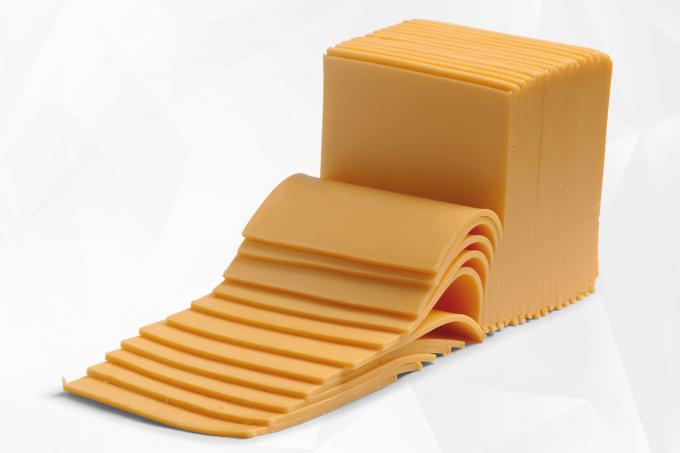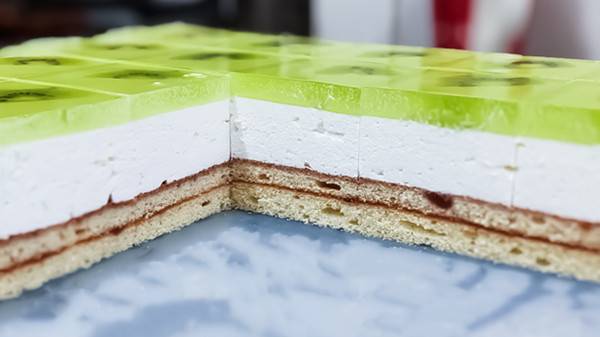

2025-10-15
why the ultrasonic cake cutter is so popular in food industry?
The market for ultrasonic food cutters is experiencing rapid growth, driven by technological advancements and market demand, and boasts promising future development prospects. Ultrasonic food cutters are expected to become more intelligent. In 2024, the market share of equipment equipped with intelligent control systems reached 41.3%, and this figure is expected to rise to 45.8% by 2025. Intelligent equipment enables more precise cutting control, improving production efficiency and product quality. With the growing demand for automated and intelligent production in the food industry, and the continued strengthening of national food safety standards, the market demand for ultrasonic food cutters, as efficient, precise, and low-loss cutting equipment, will continue to increase.
Ultrasonic food cutters utilize ultrasonic technology to cut food, offering advantages such as high cutting precision, a non-stick blade, and smooth cut surfaces. The following is a detailed description:

Operating Principle
An ultrasonic food cutter primarily consists of an ultrasonic power supply, a transducer, an horn, and a tool head (blade). An ultrasonic power source generates a high-frequency electrical signal, which is converted into high-frequency mechanical vibrations by a transducer. This signal is then amplified by a horn and transmitted to the cutting tool, causing it to vibrate at an extremely high frequency, thus cutting the food. During the cutting process, friction between the cutting tool and the food is minimal, and the cavitation effect of the ultrasound reduces food sticking, ensuring smoother cutting.
Ultrasonic food cutters are suitable for cutting a variety of foods, including baked goods like cakes, bread, pizza, and sandwiches, as well as dairy products like cheese and butter. They can achieve a variety of cutting modes, including circular slicing, dicing, and triangulating, to meet diverse food cutting needs.
The key to using ultrasonic cutters for cake cutting is to address the pain points of traditional cutting methods (such as ordinary blades and wire cutters) in cake processing. This approach is particularly effective for cakes characterized by soft textures, fillings, stickiness, and sensitivity to squeezing. It maximizes the quality, appearance, and integrity of the cake.
Cakes (especially cream cakes and mousse cakes) contain large amounts of sticky ingredients such as cream, butter, and jam. When cut with traditional blades, these sticky ingredients adhere to the blade, resulting in:
Cream/jam residue on the cut surface, creating "burrs" or "dents" and a rough appearance;
Repeated cleaning of the blade reduces efficiency and may contaminate the cake.
Ultrasonic cutters, on the other hand, vibrate at a high frequency of 20-40kHz, creating virtually frictionless cutting between the blade and the cake surface. Sticky ingredients are prevented from adhering to the blade, resulting in a consistently smooth and clean cut surface, eliminating the need for frequent cleaning. Ultrasonic cutters are particularly suitable for batch cutting of cream cakes, lava mousse cakes, and other products.
For highly viscous, high-fat, or low-temperature hardened foods, ultrasonic cutting solves the problems of "severe knife sticking, laborious cutting, and irregular cut surfaces" encountered with traditional cutting.
Representative Products:
Cheese/Raclette: Whether soft cheese (such as Brie) or hard cheese (such as Cheddar), ultrasonic cutting enables thin slices and cubes, eliminating cheese residue from sticking to the knife and requiring less frequent cleaning.
Butter/Margarine: These products are highly viscous at room temperature and harden after freezing. Ultrasonic cutting easily handles these varying conditions, producing smooth cuts suitable for subsequent processing (such as cake decorating and biscuit slicing).
Frozen Desserts: For ice cream cubes, frozen mousse, and popsicles, traditional blades can easily stick or break at low temperatures. Ultrasonic cutting allows for rapid cutting, maintaining the product's integrity and leaving no ice residue.

For foods high in sugar, viscous, or containing particles, ultrasonic cutting prevents deformation, sticking, or particle loss during cutting, ensuring a consistent product appearance. Representative Products:
Soft candies/QQ candies: These are highly sticky, such as gummy candies and marshmallows. Traditional cutting can easily cause stretching and deformation. Ultrasonic cutting allows for instant separation, resulting in a clean, stringy cut surface.
Chocolate products: This is especially true for chocolates containing nuts or fillings (such as hazelnut chocolate and liqueur chocolate). Cutting prevents chocolate from breaking and nuts from falling, maintaining a smooth cut surface and enhancing the quality of the product.
Energy bars/cereal bars: These contain sticky binders like honey and syrup, and are often filled with nuts and grains. Traditional cutting can cause the bars to become loose, while ultrasonic cutting firmly secures the grains and ensures the bars remain intact.
Jelly/Pudding: These are soft and fragile. Ultrasonic cutting creates precise, square, diamond-shaped pieces without any pressure, without damaging the elasticity of the jelly or causing spillage. The core application of ultrasonic food cutters is to "solve the pain points of traditional cutting." They offer significant advantages in processing highly viscous, soft, easily deformed foods that require high precision. They have become key equipment for achieving standardized production, enhancing product appearance, and improving efficiency in industries such as baking, dairy, and prepared meals. With the increasing demand for automated food processing, their application is expanding into more niche areas, such as plant-based foods and infant formula.
Send your inquiry directly to us